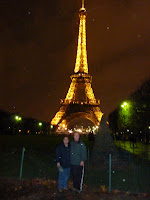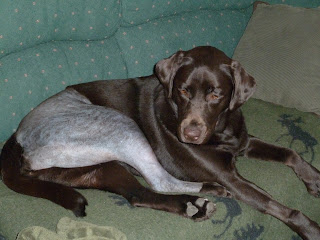Most likely procedure
How the does the Tibial Tuberosity Advancement (TTA) Works?

During weight bearing, the femur slides down the tibial plateau. The Anterior Cruciate Ligament (ACL) acts against this downward force. Dogs having a more steep slope are more predisposed to rupturing the ACL. A more perpendicular angle between the tibial plateau and the patellar tendon will result in a more stable joint.

The TTA corrects for this slope by adjusting the angle between the tibial plateau and the patellar ligament. This technique offer more advantages than other surgical techniques by being less invasive and faster to perform. The patients undergoing this procedure don't need to wear any bandage when going home. By advancing the tibial tuberosity in a ACL deficient knee, the patellar ligament is adjusted perpendicular to the tibial plateau. This eliminates the tendency of the femur to move downward over the sloped tibia.
The tibial tuberosity is osteotomized with a special saw and advanced using a special titanium cage. This cage is secured by screws and acts as a bone expander. To achieve final stability a titanium plate is secured to the tibial tuberosity by a titanium fork. The plate is secured to the tibia by two more titanium screws.
•The tibial plateau leveling osteotomy - TPLO involves making a curved cut in the top of the tibia bone (osteotomy) to include the tibial plateau. The tibial plateau is then rotated along the curved osteotomy in order to level the slope. A plate and screws are used to hold the tibial plateau in place so that the bone can heal in its new position. Below left is radiograph of a stifle before TPLO surgery and below right is a radiograph demonstrating the curved cut in the tibia bone and rotation of the the tibial plateau. Take note of the metal plate and screws that hold the bone together. The tibial plateau should not be leveled to 0 degrees or less as this will strain and potentially tear the caudal cruciate ligament. One research study indicated that dogs that had a postop tibial plateau angle between 2 and 14 degrees clinically did very well, however the original recommendation by Dr. Slocum is 5 degrees.


•Take note of this radiograph which is a front view of the stifle after TPLO surgery has been completed. A plate, which has been manually contoured by the surgeon to the shape of the tibia bone, is fastened in place with six screws. It is critical to ensure that no screws penetrate through the top of the tibia bone into the stifle, as this will result in severe damage to the joint with resultant arthritis.










